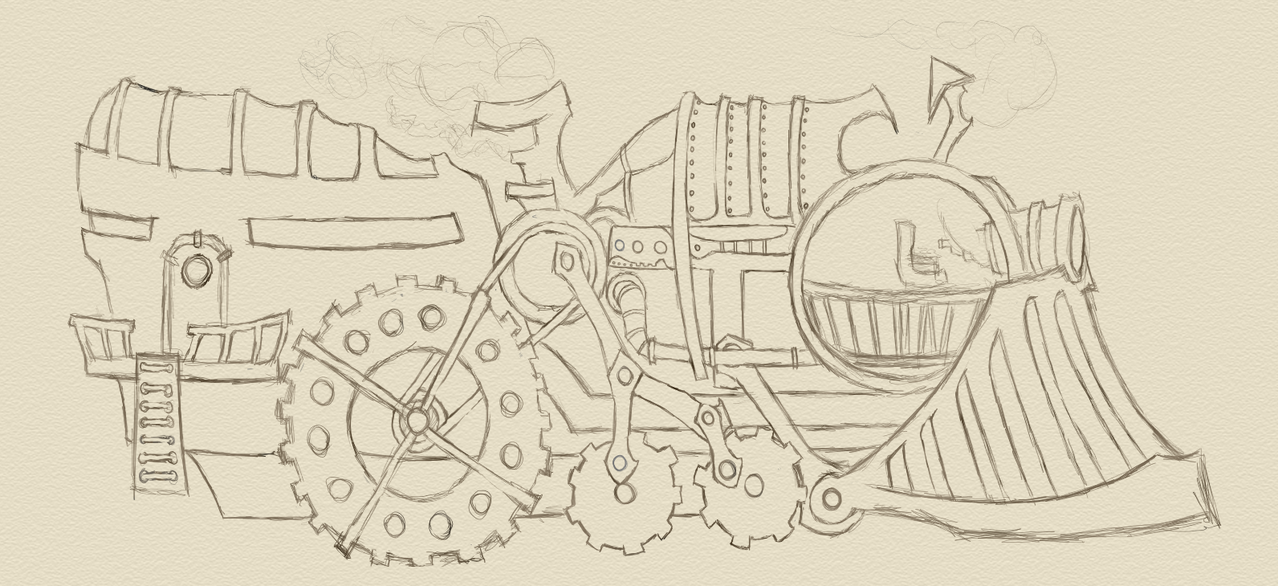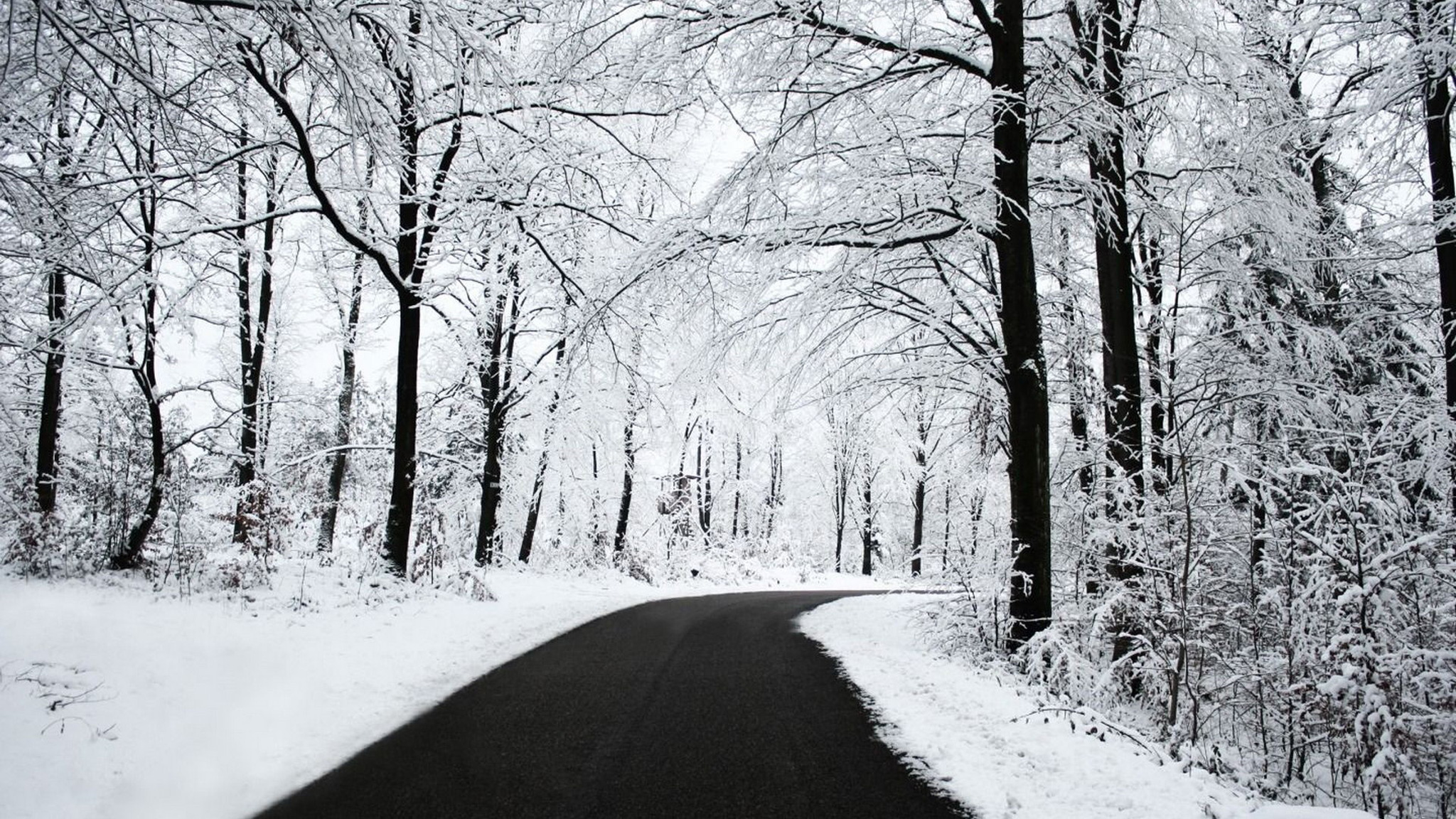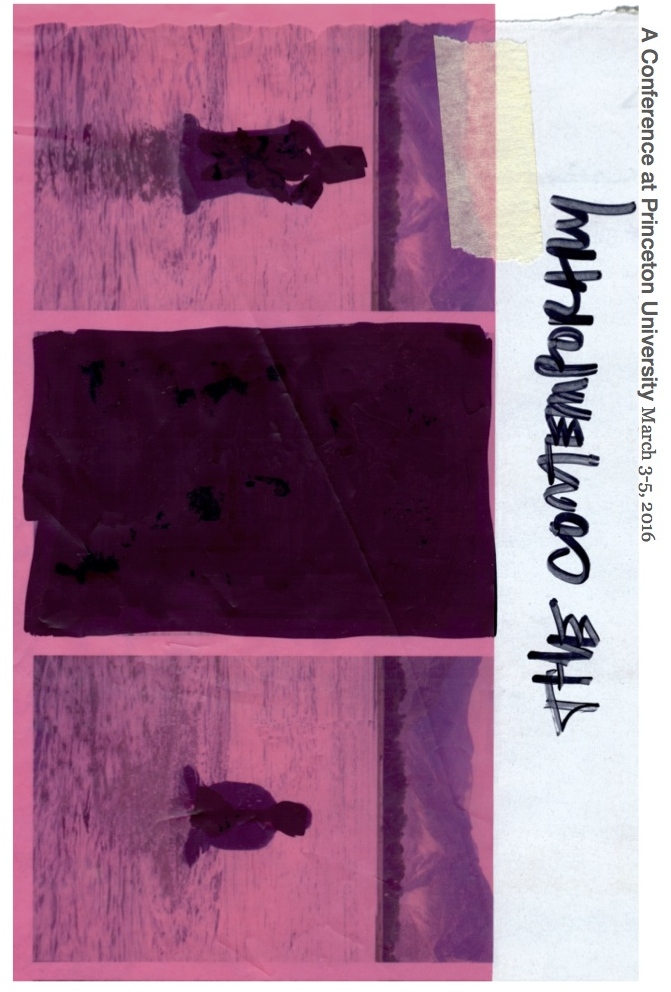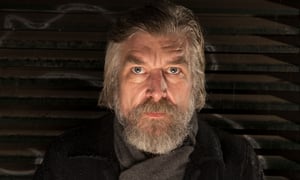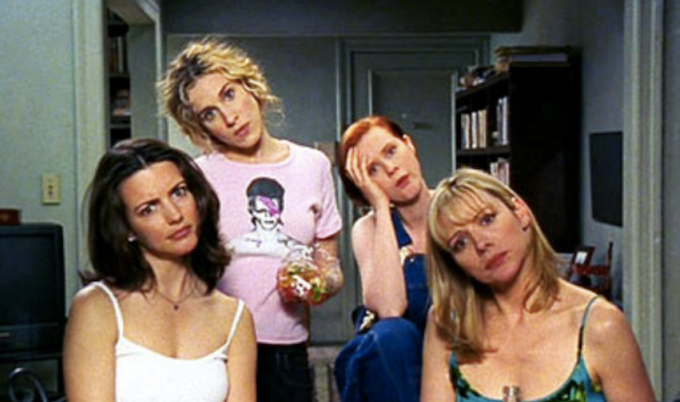My Struggle , vol. 6: Dan, September 28
Denton, TX
Dear friends,
I think Book 6 is something new.
My guiding theory of My Struggle so far was that Knausgaard's technique of dilation, his extended description of every detail at great length, served as an attempt to slow time, an act of modernist defamiliarization meant to simulate for us a quality of childhood experience, when friction resisted our integration of the world into ourselves.
Here he brings a similar, but altered, technique to a new quarry. Here he aspires to capture a much darker affect, anxiety, in its terror, its dizziness, its abyss. He continues to dilate time, but he pays less attention to the microscopics of perception and more to the extremities of scale, the finite and the infinite that exist within each of us, and the millennia that keep harbor amid the experience of the present, what Wai Chee Dimock would call "deep time."
Knausgaard evokes deep time when he gazes across the Danish straits toward the castle at Elsinore and imagines Hamlet as his contemporary ("No, the seventeenth century wasn't long ago at all"), when he draws the lineage of Iranian immigrants back to the invasion of ancient Greece by Xerxes, when he imagines himself into the lives of Neanderthals with their incomprehensible relationship to time, which leads him to lament that "the fact that history is over, that there's no future anymore other than the repetition of what we've got now, makes me feel insanely claustrophobic" (21, 44, 226-228).
Dimock helps me understand how other writers have grappled with deep time. She finds the effort in Emily Dickinson, Walt Whitman, and Star Trek, observing a "quintessential epic encounter with alien orders of magnitude" (617). She categorizes these modern texts as "low epics." They aim to function as containers, "keeping [the longue durée] at bay, judiciously rescaled to allow our brains to keep on functioning" (619). Because of them, "an otherwise impossible vastness can thus be taken in" (618). Low epic makes deep time livable.
But Knausgaard isn't writing a low epic. Anxiety cracks the container, the text, from which seeps eternity, an eternity within us as much as without, thus making us at once cosmically insignificant and simply cosmic, able to transform the quotidian into the abyss, the arrival of an unwelcome email into the end of the world. We call this genre—that leaps from anxiety to despair, and reaches to touch deep time—apocalypse.
*
Part I of Book 6 mostly takes place over a few days, maybe a week, in August 2009, shortly before the publication of Book 1. But first we get a quick glimpse ahead, to September. We open to one of those autumn days that feels like summer again, an ephemeral dispensation. Karl Ove is "headed north along the four-lane motorway in late morning with an intense feeling of happiness in [his] chest" (9). He is visiting a friend who is taking his picture for My Struggle's PR. Out at the friend's house, away from his wife, his kids, his town, Karl Ove realizes "it had been ages since I had felt such calm" (12).
The good feeling is fleeting. The pair walk through pastures near the sea to a pond where they try to hear the fire-bellied toad, but it is silent; it has, we learn, disappeared across Europe. The visit, and the book's first section, ends soon thereafter with a snatch of dialogue about the disappearance, too, from the area of once-flourishing nightingales.
Most of the next four hundred pages describe Karl Ove worrying about the response to My Struggle from the people he's written about while he goes through the tedious motions, each day, each hour, of taking care of his kids. He changes diapers, prepares meals, adjudicates disputes, and feels his stomach drop at the sudden memory of his uncle's outrageous fury at Book 1, expressed in one of his uncle's emails' subject headings: "Verbal Rape."
We get a picture of what is, in this limited respect, a relatable life: tedium punctuated with anxiety.
"I felt calm and excitement at the same time; it felt good, but underneath was anxiety" (24)
"despair, guilt, and anxiety were the emotions that flared" (42)
"a new rush of anxiety surged inside me" (45)
"a sudden unease came over me" (86)
"inside I was trembling, and nothing outside could help, it was as if everything was trembling there too" (213)
At some point, Karl Ove's anxiety comes unstuck from his misgivings about reactions to his book. The anxiety exceeds any particular grounding, it overflows. In many accounts of anxiety, including the one I think Knausgaard hews most closely to, Sören Kierkegaard's, such excess is definitional. Karl Ove finds one outlet in daydreams about the novel he'll write after he completes My Struggle, set in a counterfactual future where the Nazis won World War Two, and narrated by an old man, "alone in a house, in the midst of a dry, warm landscape in late summer" (39). He imagines it to be, at once, "a dystopia, a novel about final days" and saturated with fantasies about the utopian possibilities of (yes, I'm afraid) "Africa" (ibid, 201-203).
But his anxiety—and this part hits me where I live—finds its own outlet, in his body. "I felt sick, my whole body was aching. I couldn't trace it back to anything specific—something in particular that I'd done wrong—it had to do with everything, me in my entirety, and for that reason it couldn't be helped" (295).
*
I take Lexapro, an SSRI, for generalized anxiety disorder. It was prescribed to me not by a clinical psychiatrist, I've never seen one, but by a general practitioner, for back pain and prostatitis. I rarely experience anxiety in my mind. My mind efficiently channels it to my body as pain and discomfort. The Lexapro helps, but has not cured me. This morning, I woke before my alarm and felt tightness in the bands of muscle along my spine that signaled it would be a difficult day. Before sleep most nights, I feel a discomfiting knot beneath my pubic bone that I envision as radiating a crimson aura of deterioration.
Like Knausgaard, I cannot point to a referent for this anxiety, a pattern to its manifestations, and so I cannot ameliorate it, today, with, say, meditation or yoga. It is, for me, a fluctuating condition of my existence.
*
Anxiety, which grabs some passing triviality that makes him spin, dizzy, over an abyss, prompts Knausgaard to meditate on the union, in the human, of the finite and the infinite, the temporal and the eternal, and this is a key to the form of Book 6. He works out his method on pages one hundred and eight-three to one hundred and eighty-six. It's here that he describes "what I was trying to do" (186). His project, he writes, begins with the ugliness of daily life and ends with a pursuit of "what physicality actually is, what it means, the animal or biological, material nature of the human body and its absolute closeness to the world, in contrast to the world picture and self-understanding that comes out of our reflections as to who we are" (ibid). This is, he claims, "the only goal I had" (ibid).
Knausgaard is, like Omari says, a structuralist, here in the classic mold of Claude Levi-Strauss. He establishes binaries—physicality, animality, biology, materiality, body, finitude opposite thought, self-understanding, reflection, infinity—upon which he builds his world.
The friction created by these binaries bursts into a conflagration, a rhetorical peak, near the end of Part I, during a meditation on the work of German Romantic poet Friedrich Hölderlin, specifically the line, "Come out into the open, my friend." Knausgaard falls into a rapture over "the open." It is, for him—like it was for Martin Heidegger, whose late aesthetics are similarly obsessed with Hölderlin—a mystical space at the limit of the human, at the limit of language, a space that resolves all structuring binaries and is best expressed by religion and poetry.
He offers an apology for both. "When religion is dismissed as superstition, and poetry becomes marginalized and no longer believes in its own significance, the open vanishes from the sphere of the human" (367). And with the loss of the open from the sphere of the human, humanity itself is nothing, in Knausgaard's words, but "farts" (365).
*
Is it any surprise that Knausgaard's Kierkegaardian, Heideggerian psycho-metaphysical aesthetics comes with conservative politics?
There is, as Omari discussed, his stance on immigrants, which results, in part, from his opposition to global homogenization, as if the world were a batch of milk that could be stirred until all parts become the same. The keyword that sends Knausgaard into a vitriolic panic, and sutures together otherwise incoherent positions, is equality. He fears a world that becomes equally one culture. But closer to the here and now, he fears what he thinks of as middle-class moralism. He writes, "a morality that proceeds from the community of an all, that proceeds from we, is dangerous, perhaps more dangerous than anything else, because committing to an all is to commit to an abstraction, something existing in the language or world of ideas, but not in reality, where people only exist as separate individuals" (238).
What are the sins of this prevailing communitarian morality? The banning of the national anthem on the grounds that it is racist, the elimination of Christian language from schools to accommodate Muslim children, and the imposition of gender-neutral pronouns to appease people who are gender non-conforming (253-254). The "cultural middle class" advances these "symbolic" demands while neglecting the intensification of economic inequality.
Knausgaard joins an extant discourse, at least in North America, in 2018, sounding like psychologist and self-help guru Jordan Peterson, with his fanatic following of mostly young white men. What's refreshing, at least, about Knausgaard is his brand of bald honesty: "how I longed not to give a damn and do as I pleased" (255).
*
The apocalypse, then!
That Knausgaard's anxiety—over his book, the loss of the open, middle-class morality, the end of straight white patriarchy, and yet in dizzying excess of these—brings him to apocalypse requires no literary sleuthing. Part I ends by citing (natch!) T. S. Eliot's apocalyptic poem, "The Hollow Men." He has come to the beach only to find it ominously swarmed with ladybugs, "and as I looked over the sound, where the gigantic structure of Oresund Bridge rose up disconcertingly near us to the south and the contours of the Barsebäck nuclear power plant were visible to the north, the blue sky above the glittering blue sea teeming with tiny black dots I knew to be ladybugs, I thought to myself: this is how the world ends" (403)
This is the way the world ends
This is the way the world ends
This is the way the world ends
Not with a bang but a whimper.
Love,
Dan
ALSO IN THIS SERIES:
The Slow Burn, v.2: Welcome Back
The Slow Burn, v.2: An Introduction
My Struggle, vol. 1: Cecily, June 6
My Struggle, vol. 1: Diana, June 9
My Struggle, vol. 1: Omari, June 14
My Struggle, vol. 2: Dan, June 17
My Struggle, vol. 2: Omari, June 24
My Struggle, vol. 2: Cecily, July 1
My Struggle, vol. 2: Sarah Chihaya, July 5
My Struggle, vol. 2: Dan, July 12
My Struggle, vol. 2: Diana, July 16
My Struggle, vol. 2: Jess Arndt, July 18
My Struggle, vol. 3: Omari, July 25
My Struggle, vol. 3: Ari M. Brostoff, August 1
My Struggle, vol. 3: Dan, August 4
My Struggle, vol. 3: Jacob Brogan, August 8My Struggle, vol. 3: Diana, August 12
My Struggle, vol. 4: Katherine Hill, August 25
My Struggle, vol. 4: Omari, September 1
My Struggle, vol. 4: Dan, September 2
My Struggle, vol. 4: Diana, September 15
My Struggle, vol. 5: Omari, September 27
My Struggle, vol. 5: Diana, October 3
My Struggle, vol. 5: Dan, October 13
My Struggle, vol. 6: Omari, September 25
My Struggle, vol. 6: Dan, September 28
My Struggle, vol. 6: Stephanie, October 5
My Struggle, vol. 6: Cecily, October 9
My Struggle, vol. 6: Emily Tamkin, October 10
My Struggle, vol. 6: Diana, October 15
My Struggle, vol. 6: Rachel Greenwald Smith, October 23
My Struggle, vol. 6: Katherine Hill, October 26
My Struggle, vol. 6: Omari, October 31

